| Vintage Pulp | Jun 1 2022 |

Reality says she's way out of his league. Entertainment tradition says she isn't.
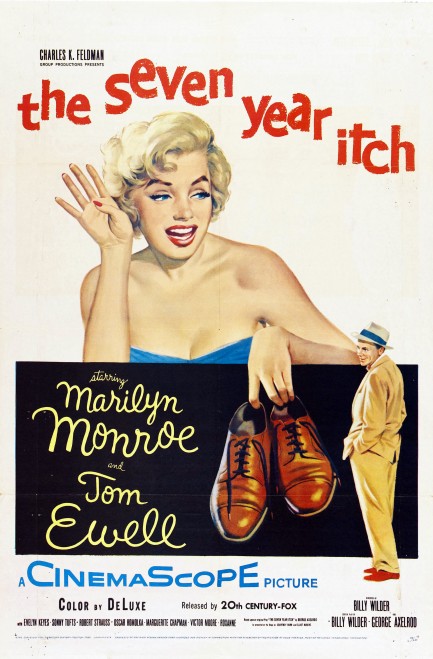
Above you see a poster for the Marilyn Monroe comedy The Seven Year Itch, which we're taking a close look at today because it's a pulp movie. No, really. It isn't a pulp movie in a standard way, but how can we ignore a film, even though it's a comedy, that happens to be about the pulp industry? Perhaps some of you have forgotten this detail, but co-star Tom Ewell plays an editor at a 25¢ publishing house, where among other important duties he repackages literary classics with sexy, good-girl-art covers. If you look just below, Ewell's secretary Marguerite Chapman displays the company's latest reimagining—a racy makeover of Louisa May Alcott's Little Women. They've featured scantily clad women in the art, and added the tagline: “The secrets of a girls dormitory.” So even though thousands of online scribes have written about The Seven Year Itch, its setting in the pulp publishing realm demands that we discuss it too.
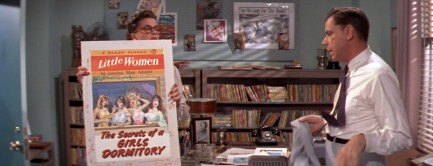
But of course, pulp is merely the backdrop; the movie is really all Monroe. We know it comes across as anachronistic to some viewers, but this film is completely modern in at least one important way. The trope of a schlubby everyman scoring with—or at least turning the head of—a woman much more beautiful than him is still a linchpin of American entertainment. Let us count the examples: There's Something About Mary, Big Bang Theory, King of Queens, She's Out of My League, Night Shift, Forrest Gump, Bewitched, Superbad, Knocked Up—in fact, anything with Seth Rogen in it—and not to be forgotten, both Beauty and the Beast and Lady and the Tramp. In all of those, the female love interest, whether human or cocker spaniel, is objectively too beautiful for the lead male. It's a trope that has always worked, and probably always will because it's primarily males who are marketed to in cinema and television.
In The Seven Year Itch the hot girl/ugly guy theme is doubly funny because Ewell's wife is played by Evelyn Keyes, and she's supposed to be, we guess, not out of Ewell's league. Uh huh. Hollywood, right? Keyes is plenty hot, though of course she's no Monroe. Cue eyeroll from our girlfriends. They aren't clear on why so many men find Marilyn attractive. To them she's a little fat, which is no surprise from the perspective of our pint-sized better halves, but the weight of actresses varied greatly during the mid-century era, from the zaftig Jayne Mansfield to the reedy Audrey Hepburn. Marilyn was somewhere in the middle of the voluptuous range—i.e. not fat. However, her weight did fluctuate. In Something's Gotta Give she was thin enough to be about perfect for current sensibilities. She made any level of poundage look good though, because, first and foremost, she was impossibly cute. This look right here:
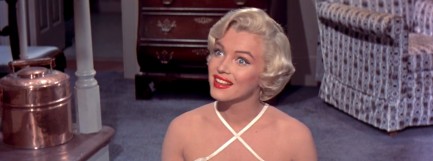
Those blue eyes of hers that are pointed in slightly different directions. That's hot. That look also captures Monroe's go-to instrument as an actress—an expression that conveys an expectant, scrubbed, and somewhat (but never totally) naive sex appeal. Having watched her dramas as well as her comedies, there's no doubt her gift was for the latter. Her comedies are unimaginable without her, and she was in her own class. Bardot played the same kittenish character at times, and Demongeot, and other actresses, but Marilyn was simply the best. The Seven Year Itch showcases an eternal star shining her brightest, as she plays a twenty-something aspiring actress who moves in upstairs from the klutzy Ewell, whose wife is away for the summer. Monroe proceeds to unknowingly fuel all sorts of male fantasies that—surprise—start to come true, as the lack of air conditioning in the upstairs flat has her increasingly avoiding it in favor of Ewell's.
The way the script is built, with each encounter between Monroe and Ewell another line on the way to potential infidelity is crossed, until the crossed line becomes literal when Monroe discovers that the apartments—which had once been a single two-level residence—are reconnectible by pulling some nails out of the floor where a staircase had been closed off. The possibility of actually living with Marilyn is a delicious dilemma, ingeniously lifted right out of the male id by director/writer Billy Wilder and co-writer George Axelrod. The movie obviously isn't totally wonderful. Some see it as sexist, and certainly its opening sequence of actors painted up like a native American tribe is pure minstrelry, but just like people, movies can harbor out-of-date ideas without being malicious. As long as that line isn't crossed, we can appreciate both The Seven Year Itch, and how far we've progressed since it was made. It premiered today in 1955, and you can see a couple more excellent posters here and here.
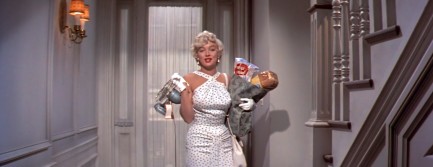
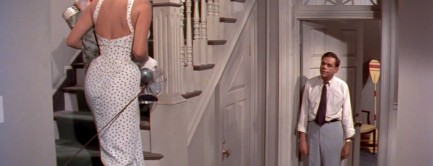
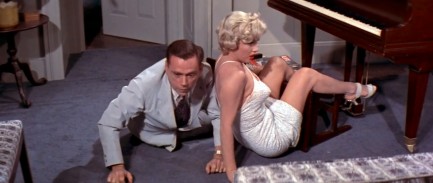
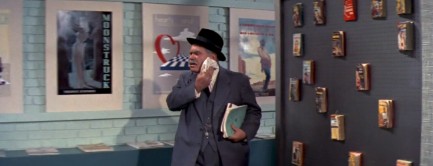
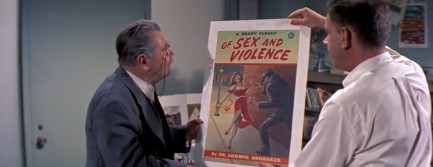
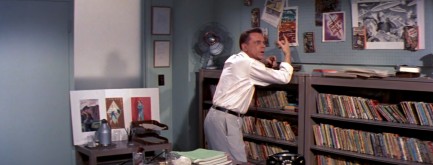
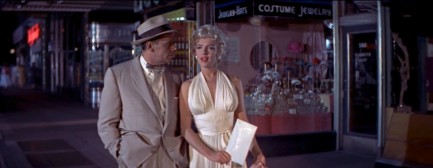
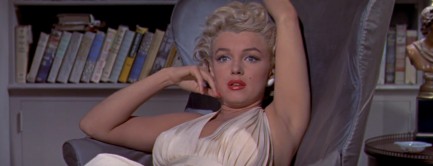
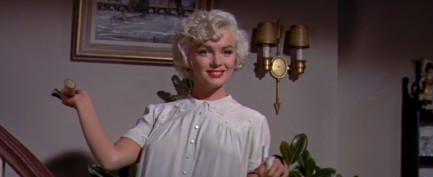
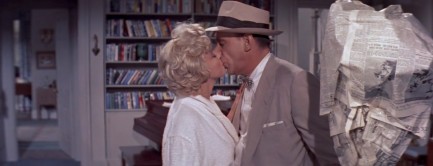
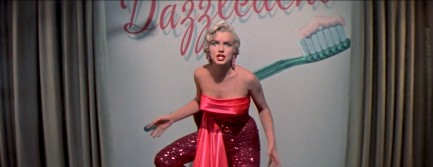
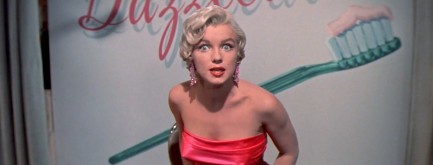












| Vintage Pulp | Jul 27 2014 |

All roads lead to Renato.
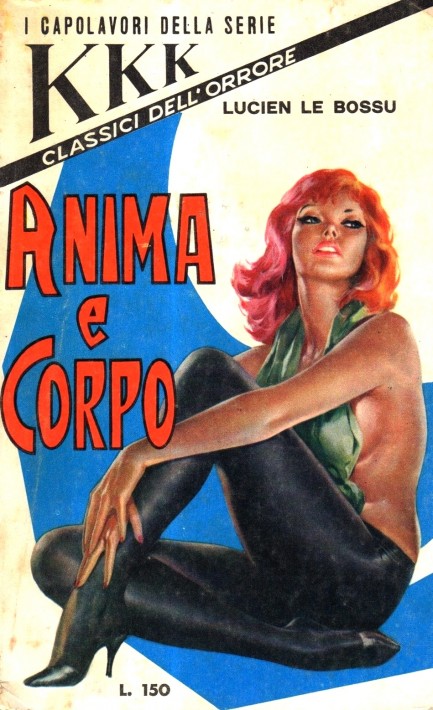
Today we have yet another excellent cover from Benedetto Caroselli—Anima e corpo, aka Body and Soul, written by Lucien Le Bossu for Edizioni Periodici Italiani’s I Capolavori della Serie KKK Classici dell’Orrore, 1965. Le Bossu, perhaps unsurprisingly, was one of about twenty literary pseudonyms belonging to Renato Carocci. In fact, Carocci even wrote under the name Tom Ewell, who was a well-known American actor of the period. How he got away with that we don’t know. Anyway, you can find out a bit more about Carocci here, and see more art from Caroselli by clicking his keywords below.




































































